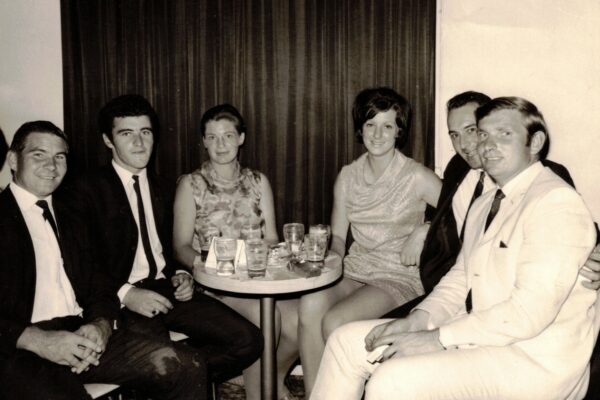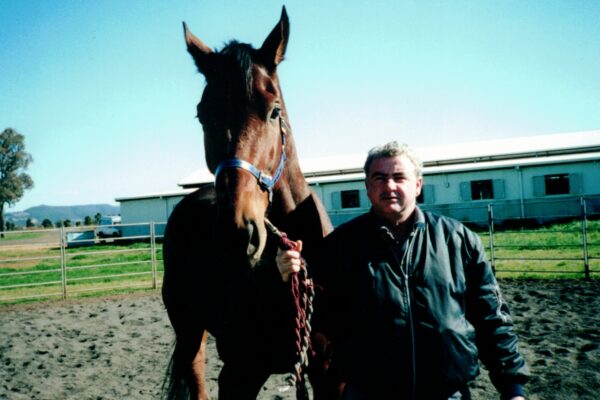Sydney Parkinson (1745 – 1771)
Featured Image:
Sydney Parkinson (1745-1771), by James Newton; National Library of Australia, nla.pic-an9800893
Sydney Parkinson and the ‘Great Superintendent of the Universe’
Peter Moore writes in his excellent book ‘Endeavour’ about the journey to measure the transit of Venus in 1769: “Sydney Parkinson exists today in the shadow of Cook, Banks and Solander. In several ways his perspective is the most revealing of them all”. Parkinson was a Quaker. I attended a Quaker School. We have that much in common; albeit it’s slight. His faith was found not in church but rather by standing ‘in the light’. Belief was established in the natural world rather than the supernatural. Rounding Cape Horn in the Endeavour Parkinson was struck with foreboding:
How amazingly diversified are the works of the Deity within the narrow limit of the globe we inhabit, which compared with the vast aggregate of systems that compose the universe, appears but a dark speck in the creation! A curiosity, perhaps, equal to Solomon’s, though accompanied with less wisdom than was possessed by the Royal Astronomer, induced some of us to quit our native land, to investigate the heavenly bodies minutely in distant regions, as well as to trace the signature of the Supreme Power and Intelligence throughout several species of animals, and different genera of plants in the vegetable system, ‘from the cedar that is in Lebanon, even unto the hyssop that springeth out of the wall’; and the more we investigate, the more we ought to admire the power, wisdom, and goodness, of the Great Superintendent of the Universe; which attributes are amply displayed throughout all his works; the smallest object, seen through the microscope, declares its origin to be divine, as well as those larger ones which the unassisted eye is capable of contemplating.
Does this adumbrate elements of pantheism?
Peter Moore also speculates that the crew of the ‘Endeavour’ were in some respects even more isolated and ‘remote’ than the Apollo Astronauts on the surface of the moon almost exactly 200 years later?
See also: http://adb.anu.edu.au/biography/parkinson-sydney-2537
This article was published in Australian Dictionary of Biography, Volume 2, (MUP), 1967 by Rex Rienits
Sydney Parkinson (1745-1771), natural history draughtsman, was born in Edinburgh, the younger of two sons of Joel Parkinson, a brewer and a Quaker. Although apprenticed to a wool draper, Parkinson’s preference was for botanical drawing at which he showed great skill. About 1767 he went to London and was employed by Joseph Banks for whom he did some outstanding work; in 1768, when Banks formed his suite of ‘scientific gentlemen’ to accompany James Cook to the South Seas in the Endeavour, Parkinson went as botanical draughtsman. The death at Tahiti of Alexander Buchan, the topographical draughtsman, threw a heavy extra burden on Parkinson, but he bore it well and ably. During the voyage he made at least 1300 drawings or sketches, and compiled vocabularies of the natives of Tahiti and New Holland. On the way home, when the Endeavour called at Batavia for repairs, Parkinson was one of many who contracted dysentery, and he died at sea on 26 January 1771. In England later that year a dispute arose between Banks and Parkinson’s brother, Stanfield. Banks had paid the latter £500 for balance of salary due and for Parkinson’s papers and drawings. The papers were later lent to Stanfield Parkinson, who contrary to agreement had them transcribed for publication and was restrained by an injunction from doing so until the official account of the voyage had appeared. His book was published later in the same year, 1773, entitled A Journal of a Voyage to the South Seas, with a second enlarged edition in 1784. A result of the squabble was that although Hawkesworth, who edited the official account of the voyage, used Parkinson’s papers and drawings freely he did not acknowledge them. Only two of Parkinson’s illustrations in these books are of Australian subjects. His own contains a study of the two Aboriginals who opposed Cook at Botany Bay, and Hawkesworth has a view of the Endeavour River (Cooktown, Queensland). A third of a kangaroo, formerly attributed to Parkinson, is now known to have been from a painting by George Stubbs.
In a classic ‘master of understatement’ Sydney Parkinson commented on the two most fierce warriors to oppose Cook et al at Botany Bay that their ‘countenance bespoke displeasure’!
Parkinson was the first European artist to set foot on Australian soil, to draw an authentic Australian landscape, and to portray Aboriginals from direct observation. A great quantity of his work survives. The British Museum has eighteen volumes of his plant drawings, of which eight, comprising 243 drawings, are of Australian plants, three volumes of zoological subjects, of which a few sketches relate to Australia, and many of his landscape and other drawings, mainly of Tahitian and New Zealand subjects. Parkinson was gentle, able and conscientious, noted, according to his brother, for ‘his singular simplicity of conduct, his sincere regard for truth [and] his ardent thirst after knowledge’. Two portraits are known: a small head in oils in the British Museum (Natural History) and the engraved frontispiece to his Voyage.
Select Bibliography
- Hawkesworth (ed), An Account of the Voyages Undertaken by the Order of His Present Majesty for Making Discoveries in the Southern Hemisphere, vols 1-3 (Lond, 1773)
- Britten (ed), Illustrations of Australian Plants Collected in 1770 During Captain Cook’s Voyage (Lond, 1905)
- Smith, European Vision and the South Pacific 1768-1850 (Oxford, 1960)
- and T. Rienits, Early Artists of Australia (Syd, 1963)
- C. Sawyer, ‘Some natural history drawings made during Cook’s first voyage’, Journal of the Society for the Bibliography of Natural History, 2 (1949)
- Lysaght, ‘Captain Cook’s kangaroo’, New Scientist, 1 (1957).
- Moore, Peter. ‘Endeavour’, Vintage Books 2018










